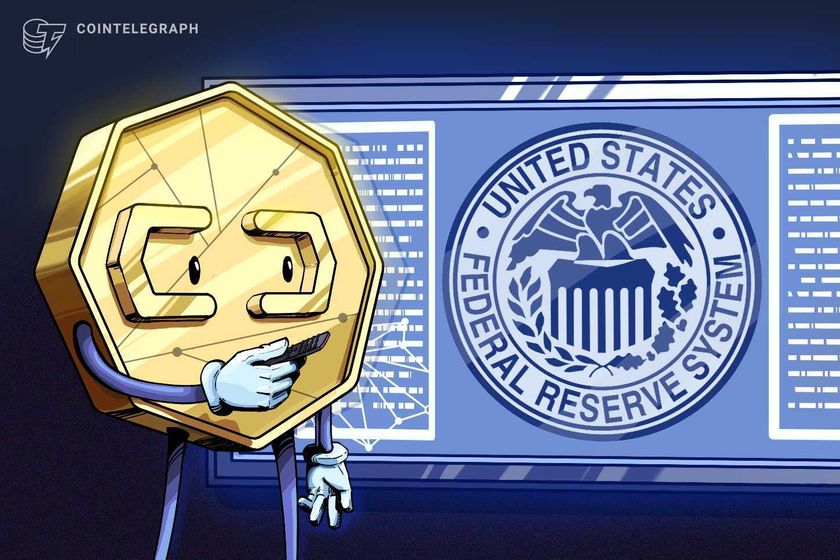New MetaMask Domain Fuels Rumors of Upcoming MASK Token Airdrop
TLDR
- MetaMask’s registration of a new domain has sparked widespread speculation about a possible MASK token airdrop.
- The domain “claim.metamask.io” has raised expectations that MetaMask may soon launch a token claim portal.
- The introduction of MetaMask’s rewards program is seen as a precursor to the rumored airdrop of the MASK token.
- ConsenSys CEO Joe Lubin highlighted that the rewards program connects MetaMask’s DeFi utility with its future decentralization.
- MetaMask’s recent rollout of new features includes support for derivative trading and integration plans with Polymarket.
A new domain registration by MetaMask has sparked speculation about an upcoming airdrop for the wallet’s token, MASK. The discovery of “claim.metamask.io” has fueled claims that MetaMask may soon launch a portal for token claims. Investors are particularly intrigued by the registration, as the page now asks for user authentication.
MetaMask Domain Registration Fuels Airdrop Speculation
The newly registered domain “claim.metamask.io” has captured the attention of the crypto community. Experts believe this could be the platform’s token claim portal for the long-awaited MASK token. This development follows the launch of MetaMask’s rewards point system, further intensifying rumors about the airdrop.
MetaMask has not officially confirmed any details about the token claim process, but the domain’s creation adds weight to the speculation. Users are already discussing the possibility that the domain may be linked to a future airdrop event. Given MetaMask’s increasing focus on rewarding user activity, the idea of a token distribution seems plausible.
MetaMask recently introduced a rewards program in collaboration with ConsenSys and its Ethereum Layer-2 network, Linea. The program aims to incentivize user activity by offering reward points for on-chain actions such as swapping tokens or bridging assets. As users accumulate points, they may become eligible for a future MASK token claim.
ConsenSys CEO Joe Lubin emphasized that the rewards program will serve as a bridge to decentralization. He said, “The airdrop and reward structure connect MetaMask’s DeFi utility with its next stage of decentralization.” These remarks suggest that MetaMask is preparing for a significant shift in its operations, centered around the MASK token.
Polymarket’s POLY Token Launch Ties with MetaMask
Earlier this month, MetaMask launched new features, including support for derivative trading on EVM-compatible networks. This includes integration with Hyperliquid for perpetual futures trading. The wallet also confirmed plans to integrate Polymarket later this year, aligning its roadmap with future token launches.
Polymarket’s CMO, Matthew Modabber, revealed that the platform would launch its POLY token alongside a retroactive airdrop. This ties in with MetaMask’s strategy, adding further fuel to the speculation surrounding the MASK token launch.
The post New MetaMask Domain Fuels Rumors of Upcoming MASK Token Airdrop appeared first on CoinCentral.
You May Also Like

Federal Reserve expected to slash rates today, here's how it may impact crypto
Market participants are eagerly anticipating at least a 25 basis point (BPS) interest rate cut from the Federal Reserve on Wednesday. The Federal Reserve, the central bank of the United States, is expected to begin slashing interest rates on Wednesday, with analysts expecting a 25 basis point (BPS) cut and a boost to risk asset prices in the long term.Crypto prices are strongly correlated with liquidity cycles, Coin Bureau founder and market analyst Nic Puckrin said. However, while lower interest rates tend to raise asset prices long-term, Puckrin warned of a short-term price correction. “The main risk is that the move is already priced in, Puckrin said, adding, “hope is high and there’s a big chance of a ‘sell the news’ pullback. When that happens, speculative corners, memecoins in particular, are most vulnerable.”Read more

Shiba Inu’s (SHIB) Price Prediction for 2025 Points to 4x Growth, But Mutuum Finance (MUTM) Looks Set for 50x Returns
